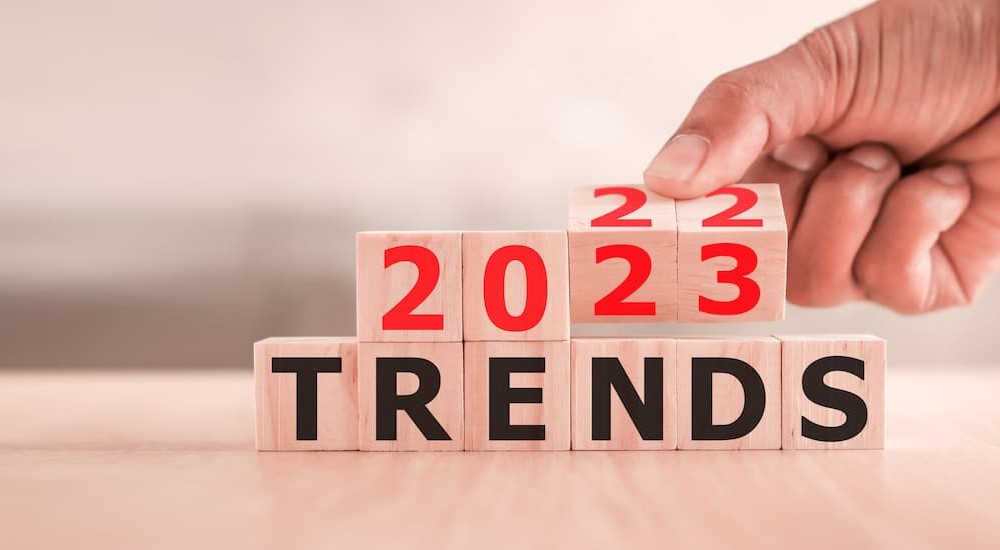In recent months and years, consumers have been greeted with significant price increases due to inflation, supply chain issues, and other factors. Car buyers, in particular, are feeling the pinch. Edmunds reports that in July 2023, the average person paid 33.7% more for a new car and 45.7% more for a used car than they did in July 2018. Some have put off vehicle purchases altogether due to the price tag.
So when will car prices drop—or at least be more stable? This is the question on the mind of everyone in the market for a vehicle. We’re taking a closer look at the current pricing situation to see how things have gotten where they are and look at the potential forecast.
Current Trends
On the surface, it seems like car prices might be starting to flatten out. Kelly Blue Book reports the average price Americans paid for a new car in October 2023 was $47,936. This is 1.4% lower than in October 2022 and 3.5% lower than when prices peaked in December 2022. However, going deeper, non-luxury vehicle prices were up slightly year-over-year, while luxury and electric vehicles were down significantly.
A slightly longer view paints a grimmer picture. The US Consumer Price Index (CPI) for new cars and trucks, which measures the average price change over time, remained in the mid-to-upper 140s from early 2012 through early 2021—a nine-year span of stability. Since then, though, it has been on a near-constant rise. The new vehicle CPI hit an all-time high in September 2023 at 179.75 and remains above 179 as of this writing.
Used vehicle markets have seen a similar rise, albeit with more volatility. In 2023 alone, the CPI went from a floor of 183.24 in February to a peak of 201.65 in July before dropping again. Both these numbers, though, are far above the 136.06 the CPI stood at in January 2020 before the start of the COVID-19 pandemic.
The Factors That Influence Car Prices
To understand this topic, we need to look at what affects vehicle value. Although most buyers only think about a car’s value in terms of a specific vehicle, some of the same factors affect the entire market. Let’s examine these factors and how they apply to the current price instability.
Supply and Demand
Anyone who’s taken an economics class has heard of supply and demand—and it certainly applies to the vehicle market. If there is a limited inventory (supply) of a vehicle, that will drive the price up on what’s available. Likewise, a high demand will increase prices because sellers know they can charge more.
This has been a huge driver of the vehicle price surge in recent years. Total new vehicle production dropped significantly during the pandemic due to parts shortage. Even into 2023, there were still some disruptions in the supply chain, particularly when it came to semiconductor microchips. The six-week UAW strike from September 15 to October 30 also affected production for certain makes and models.
Lower supply has affected car prices in multiple ways. Between the new vehicle shortage and the higher costs to manufacture them, prices of the available vehicles went up. A study from the Bureau of Labor Statistics determined up to 61.7% of new-vehicle inflation between 2019 and 2022 was solely due to dealer mark-ups.
Furthermore, with limited semiconductors available, car manufacturers were using what they had on trucks, SUVs, luxury sedans, and other more expensive models, banking on the higher profit margins to make up for the lower volume. And with new vehicle prices now being prohibitive, more people flocked to the used-car market. The increased demand has driven those prices up, too—and so, ironically, has people holding onto their existing vehicles for longer, which limited the supply of used cars.
Fuel Prices
The price of gas affects the vehicle market in multiple ways. Higher fuel prices can indeed increase the sticker price of a vehicle because of the higher manufacturing and transportation costs. This contributed to the initial price rise from 2021 to 2022.
But it also affects what types of vehicles people buy. When fuel prices are lower, people are more willing to purchase SUVs, trucks, sports cars, and other vehicles that aren’t as fuel-efficient because the cost of ownership is lower. This leads to higher prices on these already high-priced vehicles. Conversely, when the price of fuel goes up, people are more likely to target fuel-efficient sedans or electric vehicles—if they can afford a car at all, as the higher cost of operating their existing vehicles leaves less disposable income.
Interest Rates
As great as it would be to pay for a vehicle upfront, few Americans have that luxury. Most purchases are at least partially financed, and the higher the interest rate, the more you pay. Unfortunately for car buyers, the Federal Reserve has greatly increased the interest rate benchmark to try to get inflation under control. After being virtually zero throughout 2020 and 2021, the effective rate is now sitting at 5.33% as of December 2023.
This has been reflected in car loan rates. According to Statista, the average APR on a 60-month loan for a new car rose from 3.85% in December 2021 to 7.51% in December 2023. For a $40,000 loan, that’s a $70 higher monthly payment and an extra $4,000 of interest over the length of the loan. Used car loan rates are historically even higher than new car rates.
The Outlook
What does it all mean for the future of car prices? Well, some hope may be on the horizon. While many analysts are predicting that it will still be a few years before car production returns to pre-pandemic levels, a report by the United Bank of Switzerland projects worldwide vehicle production for 2023 is on track to be 6% higher than total sales. That could mean price cuts, even if only temporary, as manufacturers and dealers offload surplus inventory. It will be something to keep an eye on as part of the larger pricing picture.
As for fuel costs, analysts expect oil prices to rise in 2024 thanks to certain OPEC+ members voluntarily reducing production. Because of this, it may cost less to buy gas-hungry vehicles as manufacturers reduce prices to try and spur demand. Conversely, hybrid and electric vehicles are more likely to go up in price, driven by the growing interest in eco-friendly options––although continued reductions in battery prices will help counteract that trend.
Unfortunately, there doesn’t appear to be an interest rate relief coming soon. In September 2023, the Federal Reserve forecast interest rate benchmarks to remain above 5% at least through 2024. That means at least one more year of higher interest rates on car loans, making financing a tougher proposition. In an ironic way, this represents a form of pricing stability—just not the one buyers are looking for.
Our Prediction
All in all, it looks like we could be at least a year or two away from seeing the car price reductions consumers are looking for—and the days of pre-pandemic pricing may be gone forever. Nonetheless, if you absolutely must get a new car, keep these tips in mind:
- Shop for new cars late in the year when manufacturers have end-of-year deals to reduce inventory.
- If you’re trading a car in, be willing to go around and see which dealership will give you the best offer.
- Be flexible on which vehicles you’re willing to buy—or be ready to wait on your dream make and model.
The car and truck market is still sorting itself out, and consumers should be on the lookout for sudden changes. We’ll continue monitoring the price situation as it evolves.






